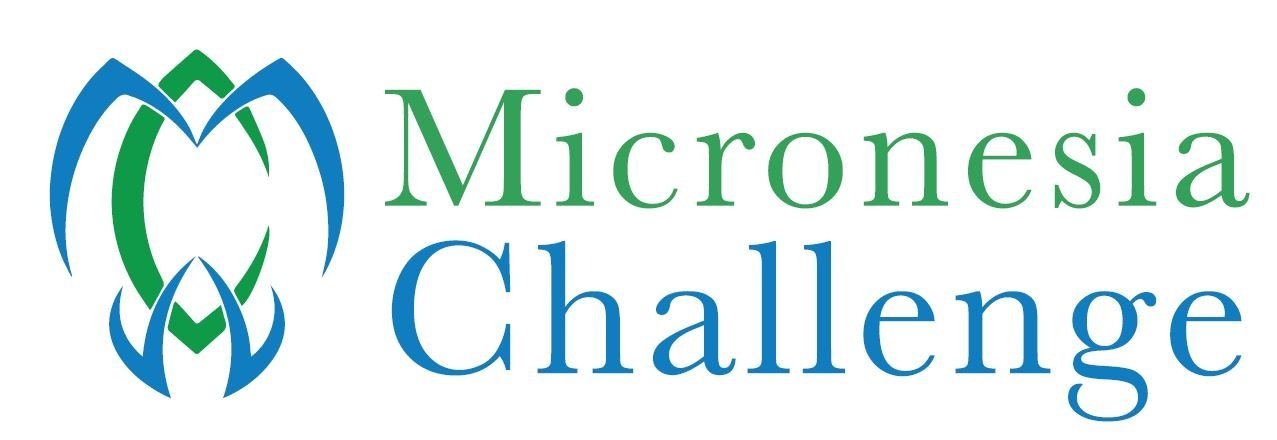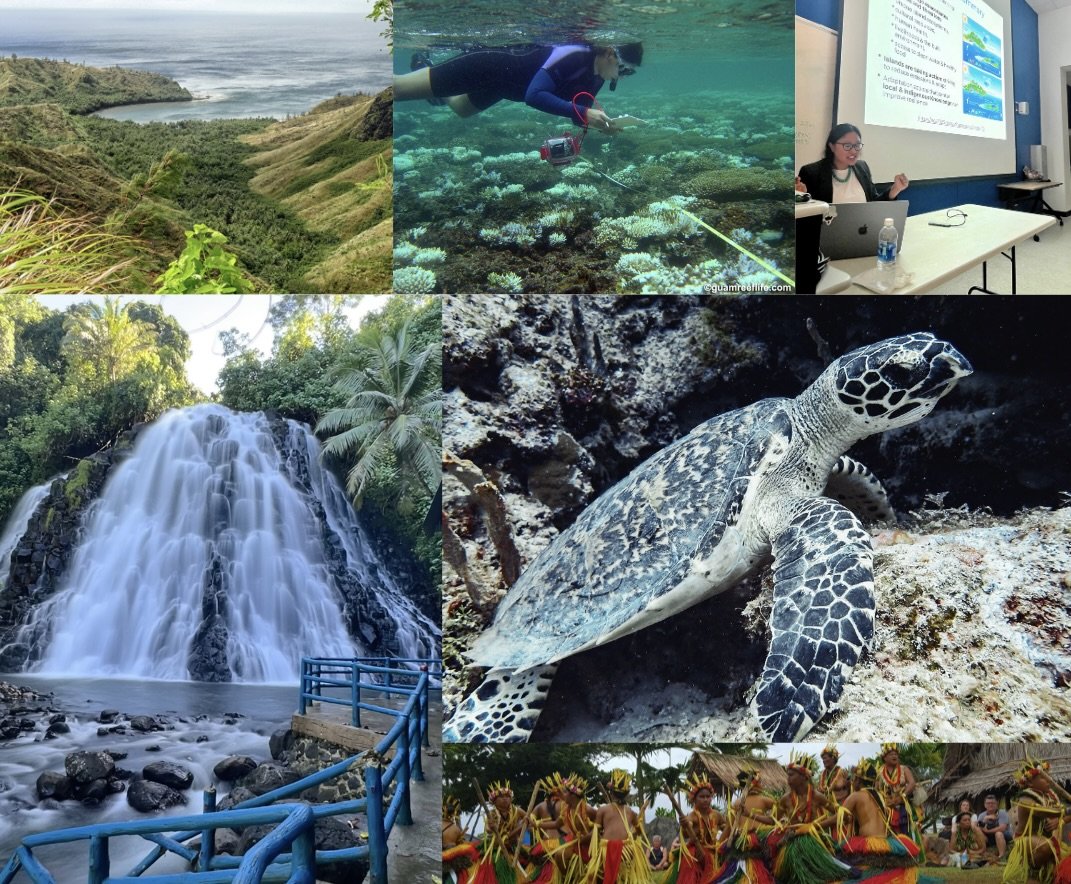Reflections on a Challenge Worth Pursuing
Eighteen years ago, leaders from Palau, Guam, the Northern Marianas Islands (NMI), the Federated States of Micronesia (FSM), and the Republic of the Marshall Islands (RMI) launched the Micronesia Challenge (MC). This bold initiative set out to effectively conserve 30% near-shore marine and 20% terrestrial resources. This ambitious commitment set Micronesian Islands as global conservation leaders, inspiring similar initiatives worldwide and bringing attention and resources to the region.
In 2019, the Chief Executives re-committed and broadened the MC by committing to effectively manage 50% marine (to the edge of the EEZ) and 30% terrestrial resources. Furthermore, the initiative expanded its scope to include climate change, sustainable livelihoods, invasive species, habitat restoration, enforcement and compliance, and fisheries management.
The MC’s unique structure allows it to align with global commitments such as the UN Sustainable Development Goals (SDGs), the UN Convention on Biological Diversity (CBD) Global Biodiversity Framework (GBF), and, for the respective countries, the National Biodiversity Strategic Action Plans (NBSAPs). The ambitious scale of this regional commitment has also attracted substantial resources, with conservative estimates showing that the MC raised or leveraged over $82M for conservation efforts in the region between 2006 and 2020.
This future-focused initiative not only works to preserve the current health of our environments but also ensures that the culture of our jurisdictions and the livelihoods dependent on these practices are securely accounted for. Through the Bill Raynor Micronesia Challenge Scholarship (BRMC) and the Micronesia Challenge Young Champion (MCYC) programs, the region has supported 20 scholarships for master’s degree and PhD students, engaging Micronesian youth in regional and jurisdictional environmental initiatives effectively building jurisdiction capacity.
Jurisdictional Updates
Though a collaborative effort, each jurisdiction controls its structure, approach, and effective management efforts as the region strives towards its ambitious goals. This open approach by the MC promotes knowledge sharing and collaboration while also promoting conservation efforts that cater to the specific culture, geography, and needs of the individual jurisdictions. Since 2020, each jurisdiction has made significant progress toward their shared goals.
Palau
The total coverage of conservation and protected areas in Palau is 70% marine and 19% terrestrial. They have surpassed the marine commitment of 50% and are more than halfway to achieving the 30% goal for 2030. Protected areas within the Protected Areas Network (PAN) make up 39% near-shore marine and 9% terrestrial. Other significant accomplishments include establishing the Eradication Detection Rapid Response (EDRR) Council, a holistic approach to invasive species projects that helps assess, identify, mitigate, and eradicate invasive species within protected areas. Additionally, the working group that the jurisdictions were called to establish during the re-commitment of the MC was established. Palau has been working to align the NBSAP and MC to achieve its goals and commitments.
Guam
The Guam Green Growth (GGG)- Thriving Natural Resources initiative is rooted in the goals of the MC. Through its “Life on Land” and “Life Below Water” initiatives, Guam has conducted forest inventory and analysis for 59 of 116 MC forest plots and recently conducted Cause and Determination Wildland Fire Investigation Training for Guam’s Law Enforcement Officers and Conservation Officers to investigate wildland fires. The University of Guam and Sea Grant partners and the Department of Agriculture have been facilitating a science-to-community initiative for ongoing discussion about the management planning process and fisheries regulations. In its effort to combat climate change, Guam has also been working to align its Priority Climate Action Plan (PCAP) with a Comprehensive Climate Action Plan (CCAP). Guam participated in the 5th National Climate Assessment (NCA 5) Hawaii and U.S. Affiliated Pacific. Guam now has a repository for all marine and terrestrial articles, scientific journals, and gray literature that is available online and accessible to the public: https://seagrant.uog.edu/mcrep/. MC Guam has an updated website: https://seagrant.uog.edu/mcguam/.
Northern Marianas Islands (NMI)
The Northern Marianas Islands have established a Green Growth Initiative (GGI) that follows a similar framework to Guam. The GGI is a multi-agency and non-governmental initiative that supports achieving the MC goals and SDGs #13-15 for Climate Action, Life Below Water, and Life on Land. The recent establishment of NMI’s GGI has allowed this jurisdiction to reframe its approach and recalibrate timelines. The NMI’s Comprehensive Sustainable Development Plan (CSDP) has also incorporated the MC into its sustainability planning. This CSDP utilized existing efforts to streamline and optimize the sustainability efforts within the NMI. NMI has also established mangrove nurseries to reintroduce a species of mangrove that had been lost. Finally, the NMI is also holding a biosecurity seminar that focuses on invasive marine species and the development of a management plan to prevent the spread of invasives in NMI.
Federated States of Micronesia (FSM)
The FSM contains four subnational focal areas within its jurisdiction and has seen many successes. Under its current presidential administration, the FSM has endorsed a constitutional amendment recognizing the people’s right to a healthy environment. A Marine Spatial Planning Act was also introduced to Congress in July last year. The Nat Geo Expedition concluded earlier this year filled in much of the information gaps that the FSM had about the effectiveness and general coverage of the outer atolls. The Ocean Use Survey, a socioeconomic survey that contributes to the development of Marine Spatial Plans, has been completed in both Kosrae and Yap. The FSM has also secured funding from Congress to start revising and updating the NBSAP.
Republic of the Marshall Islands (RMI)
The coverage of protected areas within the Reimaanlok, the National Conservation Area Plan for the RMI, is 33% marine and 19% terrestrial. Since the last MIF, RMI has revamped its Coastal Management Advisory Council (CMAC), which serves as the advisory and technical arm for the PAN. The CMAC also serves as a cross-sectoral platform for collaboration comprised of seven representative board members from the Republic of the Marshall Islands Environmental Protection Agency, Marshall Islands Marine Resources Authority, Marshall Islands Conservation Society, Ministry of Natural Resources and Commerce, Climate Change Directorate, Ministry of Culture and Internal Affairs, and National Disaster Management Organization.
For more updates on the MC, follow us on Facebook @MicronesiaChallenge!

